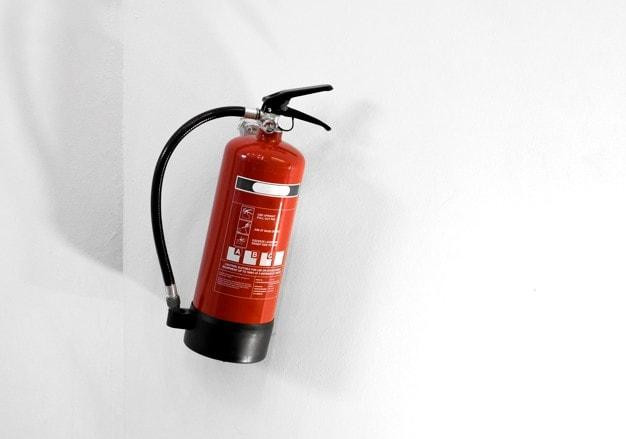You may have noticed letters written on the side of a dry chemical or foam extinguisher but have been unsure of their significance. Fire extinguishers often come in a variety of forms based on the types of fires they can put out. A and B fires can be extinguished with an AB extinguisher. Once approved to put out these three different types of flames is an ABC fire extinguisher. According to substance burning, there are several types of fires. This is so that different types of fires can be extinguished using various techniques.

The techniques used to put out some flames can spread them or make them worse. For instance, never use water to put out a grease fire because it would only spread the burning oil to another area. Electrical fires shouldn't be moistened because doing so could result in electrocution. Many foam fire extinguishers have type A and type B certifications, which cover combustibles including paper, wood, coal, and other common flames (liquids like oil, spirits, or petrol, but not cooking oils). The majority lack certification for electrical fires or category C fires (flammable gases). In flames caused by cooking oil and other kitchen fires, use wet chemical extinguishers certified for type K fires.
Dry chemical extinguishers make up the majority of ABC fire extinguishers. Ammonium phosphate is present in the most popular of them. Use this type of extinguisher with caution since it may be caustic and abrasive. That implies that some metals, including aluminum, can be harmed by the dry chemicals inside. The aluminum phosphate they contain occasionally experiences hydrolysis, generating phosphoric acid and harming anything it comes in contact with. Because of this, this kind of extinguisher is not used on aircraft, and you shouldn't use it on electrical equipment unless there are no other extinguishers available.
In contrast, foam fire extinguishers have a foam that quickly forms a film. This extinguishes the flames and smothers the fire by acting like a fire blanket. The coating covering the foam keeps out vapors and stops the fire from acquiring oxygen, which prevents it from re-igniting. For scenarios involving both class A and class B fires, all foam fire extinguishers are a good option. They are less effective at encapsulating burning gases, hence they are less useful for type C flames.
The first step in using a fire extinguisher of any kind is to confirm that others are aware of the fire. Before attempting to put out the fire on your own, alert any nearby occupants of the building or call the fire department. Make sure your head is free of smoke and gases, which are responsible for up to 70% of fire-related fatalities. Before attempting to put out the fire, make certain that you are familiar with how to use the extinguisher. Verify the sort of extinguisher you have to make sure it is suitable for the current fire. Never allow the fire to block your path to the room's exit.
While dealing with a fire, it's crucial to use the proper type of extinguisher. Use a foam fire extinguisher, ABC fire extinguisher, CO2 fire extinguisher, or another kind to help you put out the fire after determining what kind of fire it is. Always adhere to the safety and usage guidelines printed on the container's exterior. These extinguishers can be found in garages, factories, offices, and pretty much wherever else a fire might occur. If you want to make sure that your extinguisher works effectively, regular maintenance is essential. Always exercise caution when near a fire. That includes selecting the appropriate extinguisher, ensuring adequate charging, and utilizing it safely.
For more info:- fire extinguisher test
fire extinguisher test and tag
fire extinguisher testing cost
Source Url:- https://sites.google.com/view/thelocalguystestandtagcomau9/home




Comments